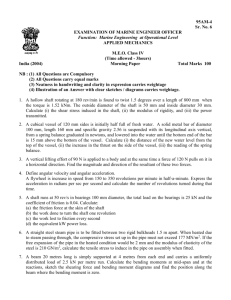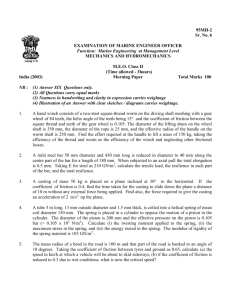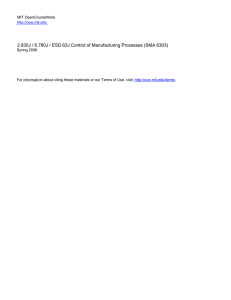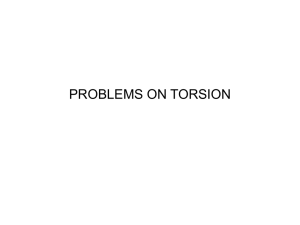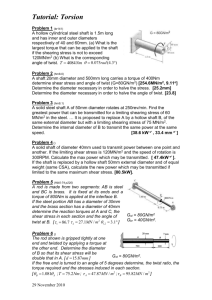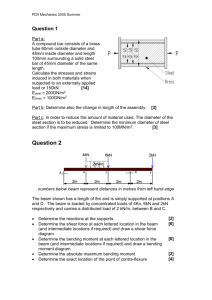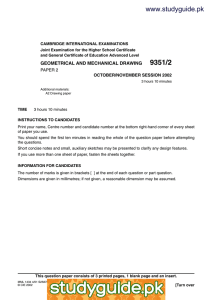95MH-2
advertisement
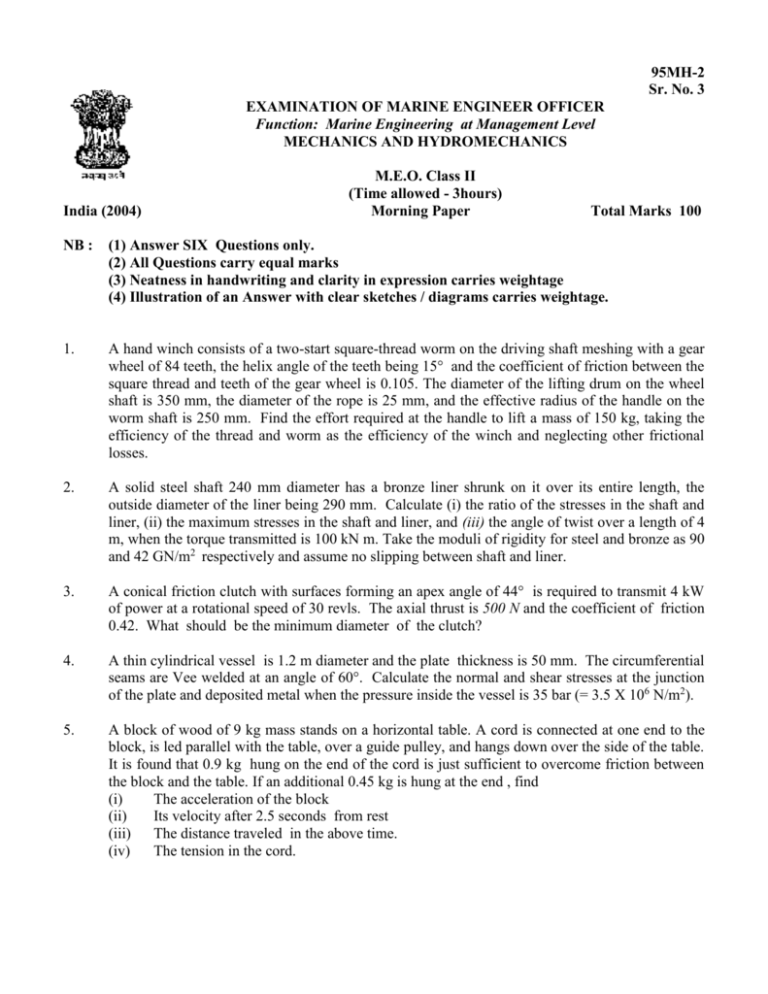
95MH-2 Sr. No. 3 EXAMINATION OF MARINE ENGINEER OFFICER Function: Marine Engineering at Management Level MECHANICS AND HYDROMECHANICS India (2004) M.E.O. Class II (Time allowed - 3hours) Morning Paper Total Marks 100 NB : (1) Answer SIX Questions only. (2) All Questions carry equal marks (3) Neatness in handwriting and clarity in expression carries weightage (4) Illustration of an Answer with clear sketches / diagrams carries weightage. 1. A hand winch consists of a two-start square-thread worm on the driving shaft meshing with a gear wheel of 84 teeth, the helix angle of the teeth being 15° and the coefficient of friction between the square thread and teeth of the gear wheel is 0.105. The diameter of the lifting drum on the wheel shaft is 350 mm, the diameter of the rope is 25 mm, and the effective radius of the handle on the worm shaft is 250 mm. Find the effort required at the handle to lift a mass of 150 kg, taking the efficiency of the thread and worm as the efficiency of the winch and neglecting other frictional losses. 2. A solid steel shaft 240 mm diameter has a bronze liner shrunk on it over its entire length, the outside diameter of the liner being 290 mm. Calculate (i) the ratio of the stresses in the shaft and liner, (ii) the maximum stresses in the shaft and liner, and (iii) the angle of twist over a length of 4 m, when the torque transmitted is 100 kN m. Take the moduli of rigidity for steel and bronze as 90 and 42 GN/m2 respectively and assume no slipping between shaft and liner. 3. A conical friction clutch with surfaces forming an apex angle of 44° is required to transmit 4 kW of power at a rotational speed of 30 revls. The axial thrust is 500 N and the coefficient of friction 0.42. What should be the minimum diameter of the clutch? 4. A thin cylindrical vessel is 1.2 m diameter and the plate thickness is 50 mm. The circumferential seams are Vee welded at an angle of 60°. Calculate the normal and shear stresses at the junction of the plate and deposited metal when the pressure inside the vessel is 35 bar (= 3.5 X 106 N/m2). 5. A block of wood of 9 kg mass stands on a horizontal table. A cord is connected at one end to the block, is led parallel with the table, over a guide pulley, and hangs down over the side of the table. It is found that 0.9 kg hung on the end of the cord is just sufficient to overcome friction between the block and the table. If an additional 0.45 kg is hung at the end , find (i) The acceleration of the block (ii) Its velocity after 2.5 seconds from rest (iii) The distance traveled in the above time. (iv) The tension in the cord. 6. The mass of a helical spring is 0.7 kg and it deflects one millimetre for every 0.35 N of axial force. Calculate the value of the mass to be hung on the end of the spring so that it will make 90 oscillations per minute. 7. A short solid bar 125 mm diameter supports an axial compressive load of 275 kN, the line of action of this load being 12 mm from the centre of the bar. Calculate the maximum and minimum stresses in the bar. 8. State and prove with sketches the Bernoulli’s equation for flow through a non-uniform pipe. 9. Describe an experiment for the calculation Draw the apparatus used for such calculations. of hydraulic -----------------------X------------------- coefficients, Cv, Cd, Cc.
